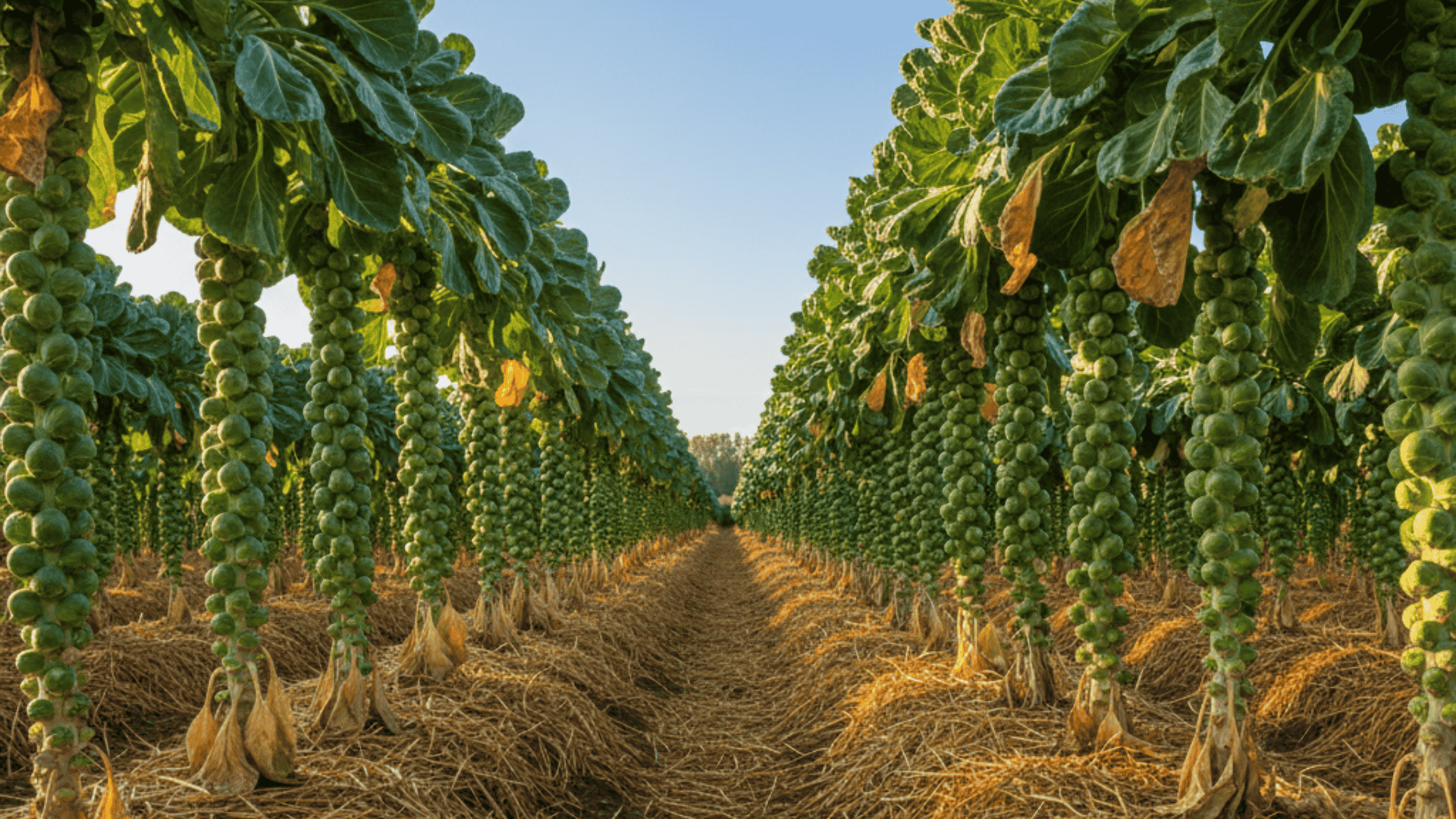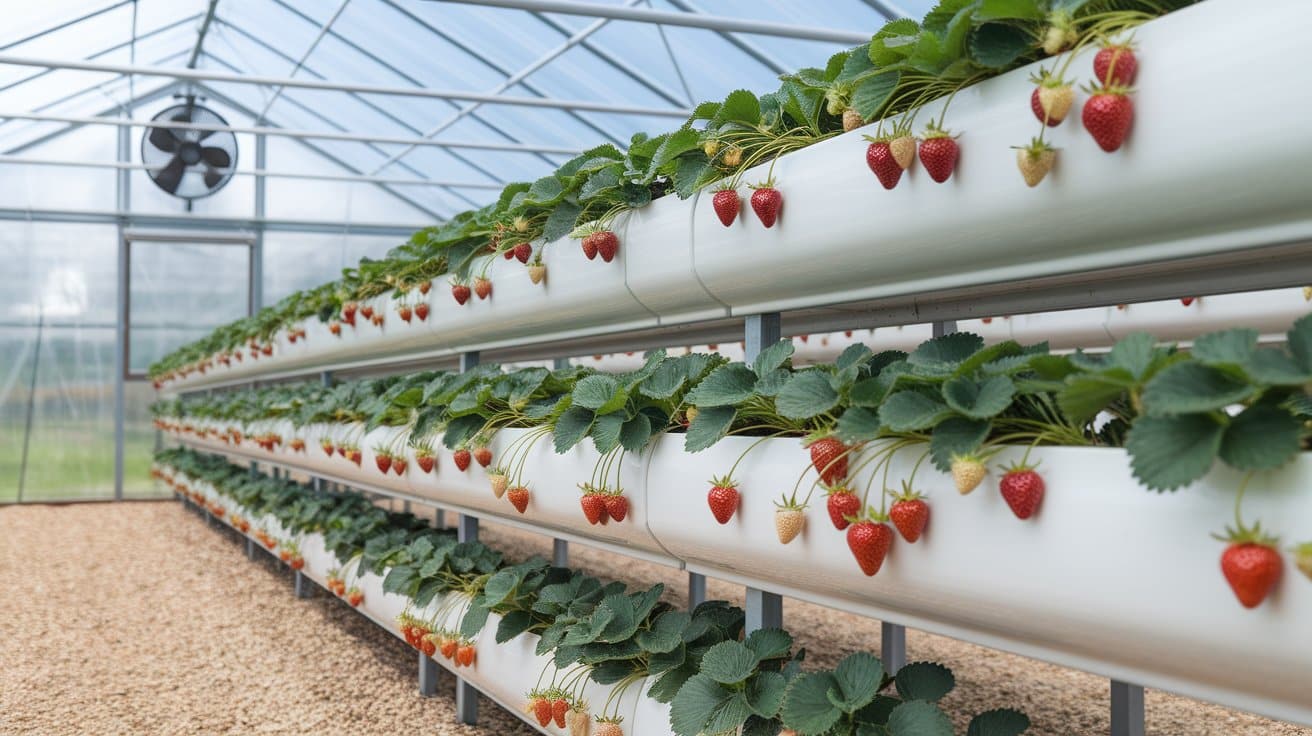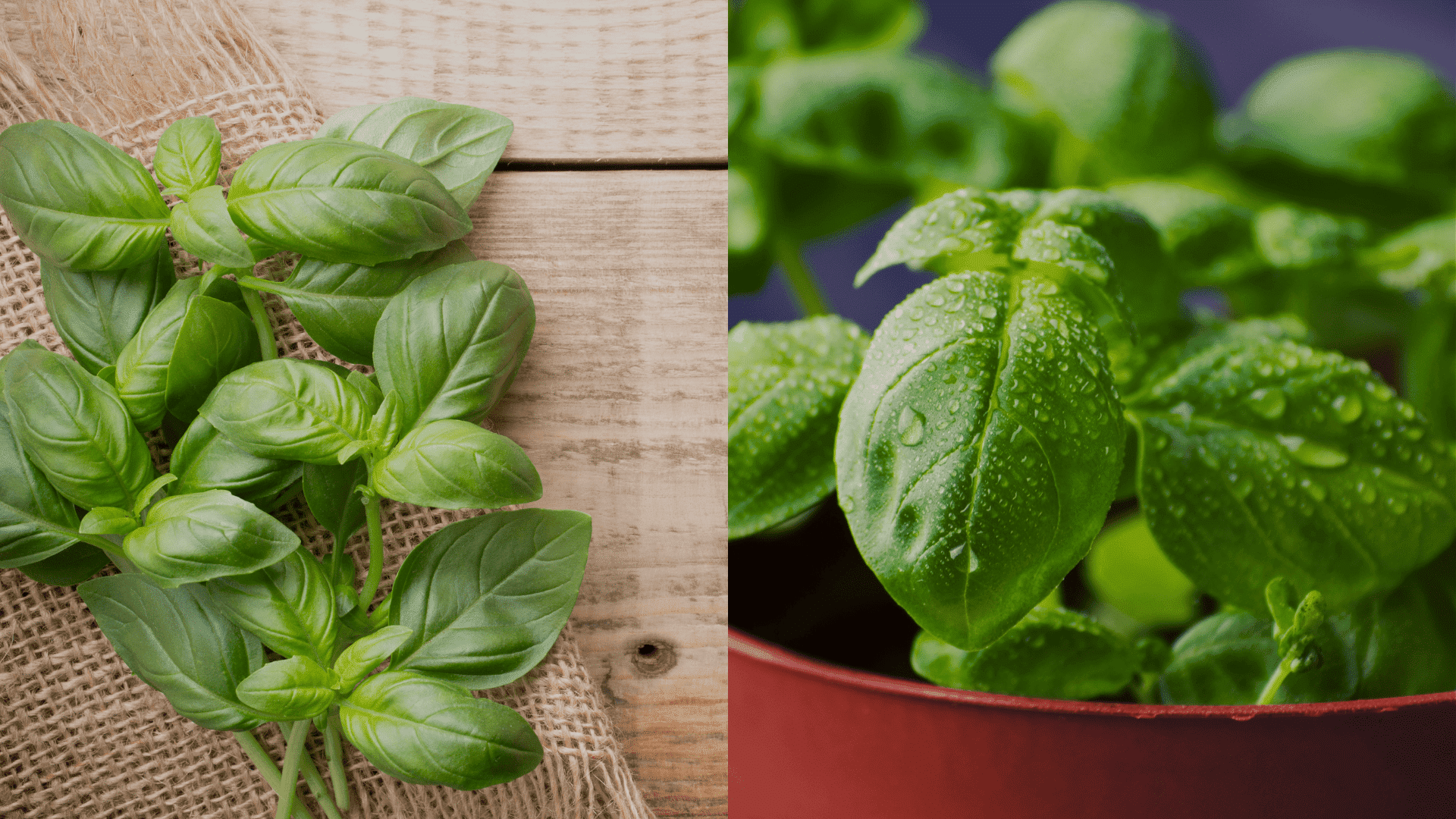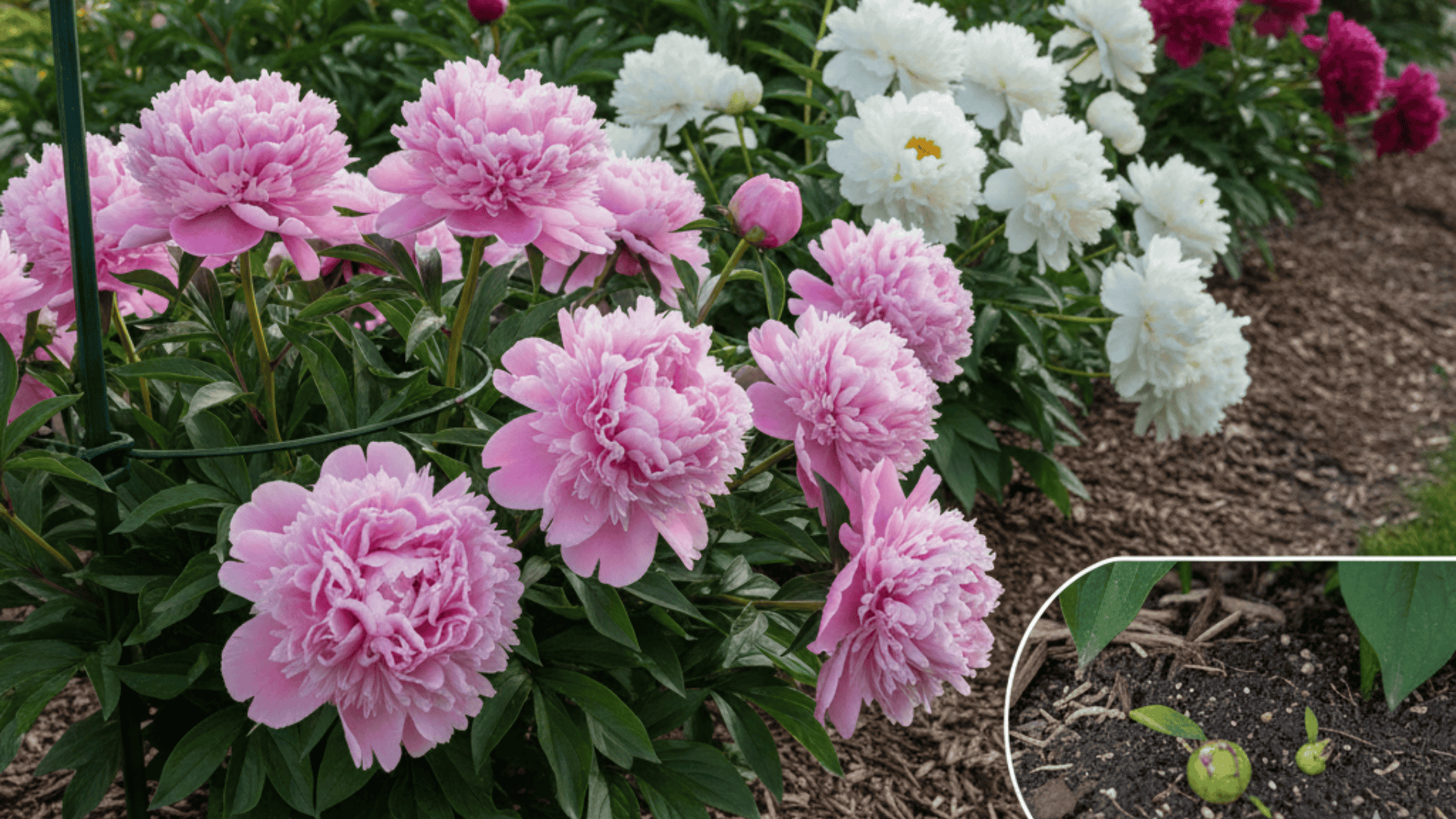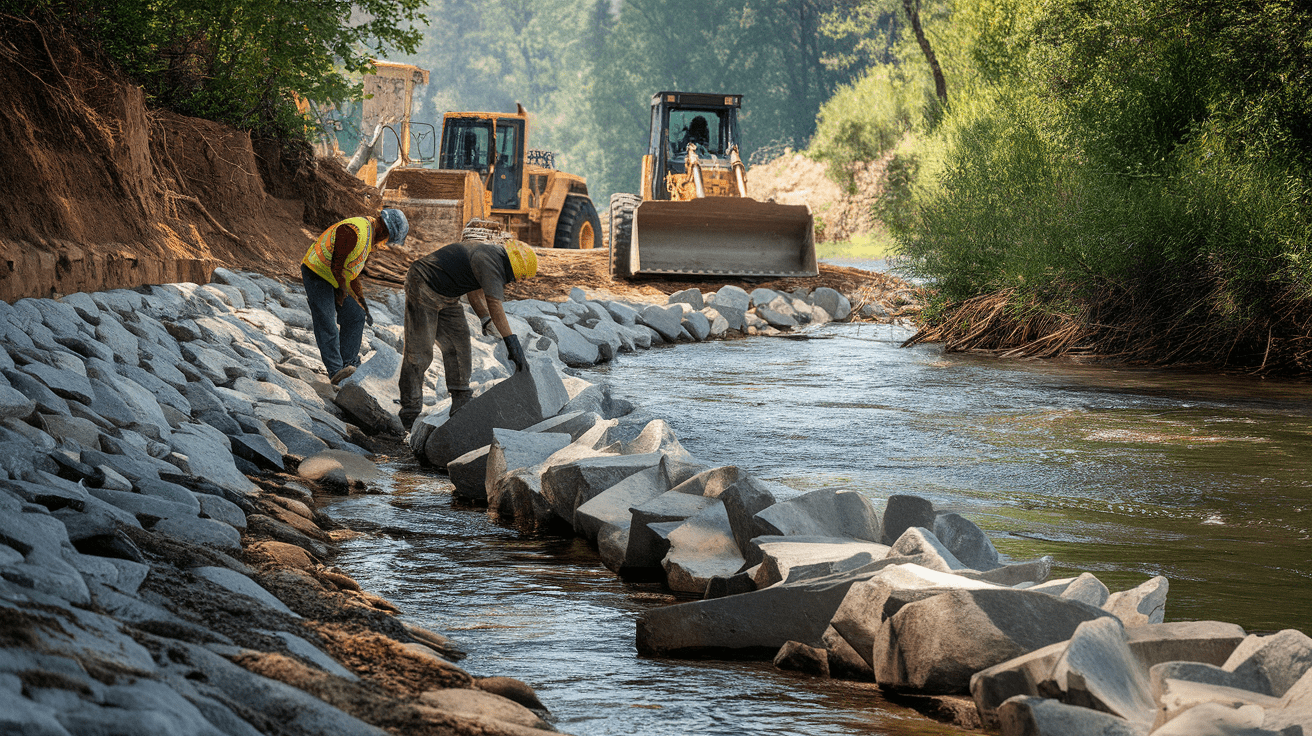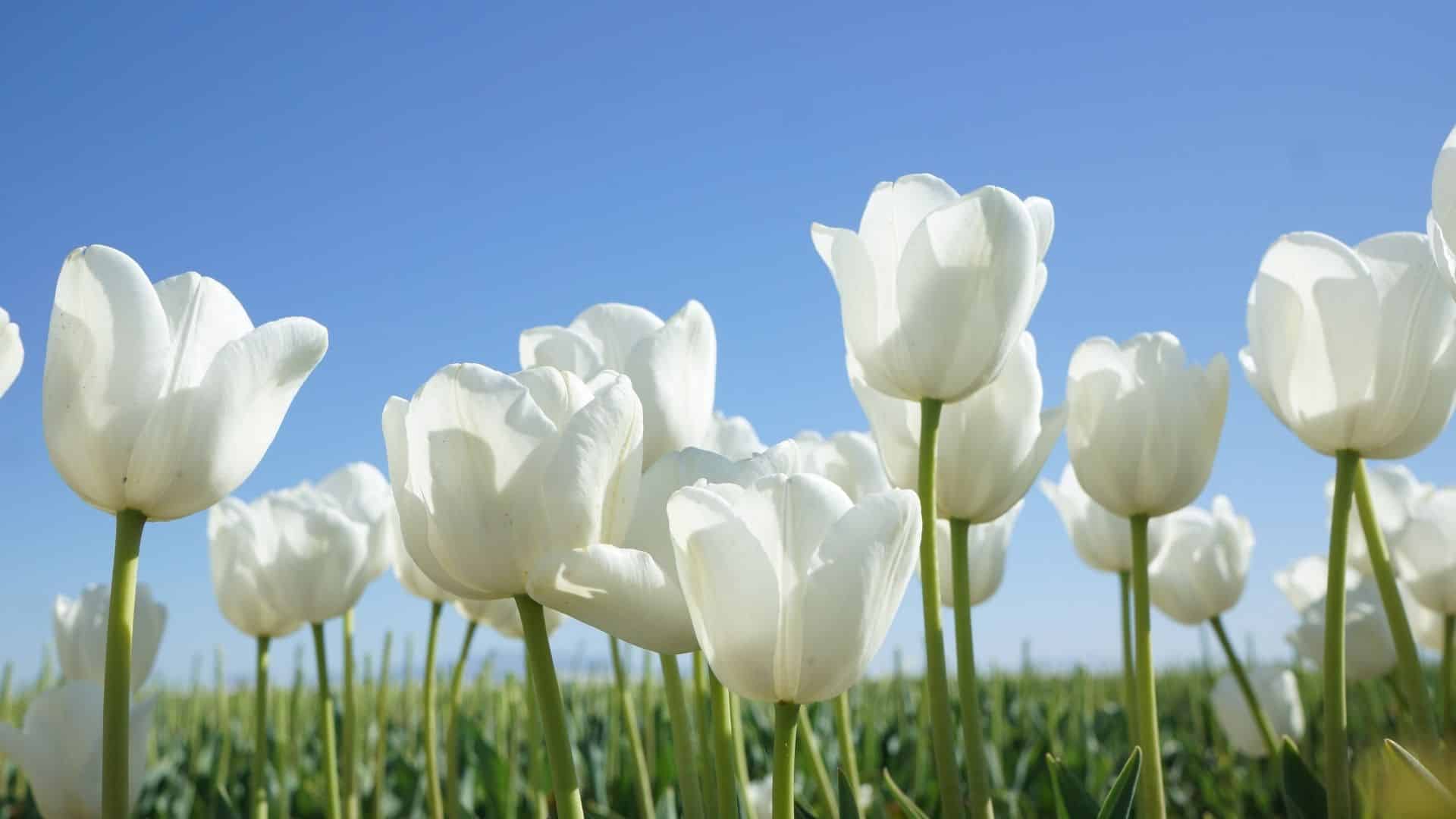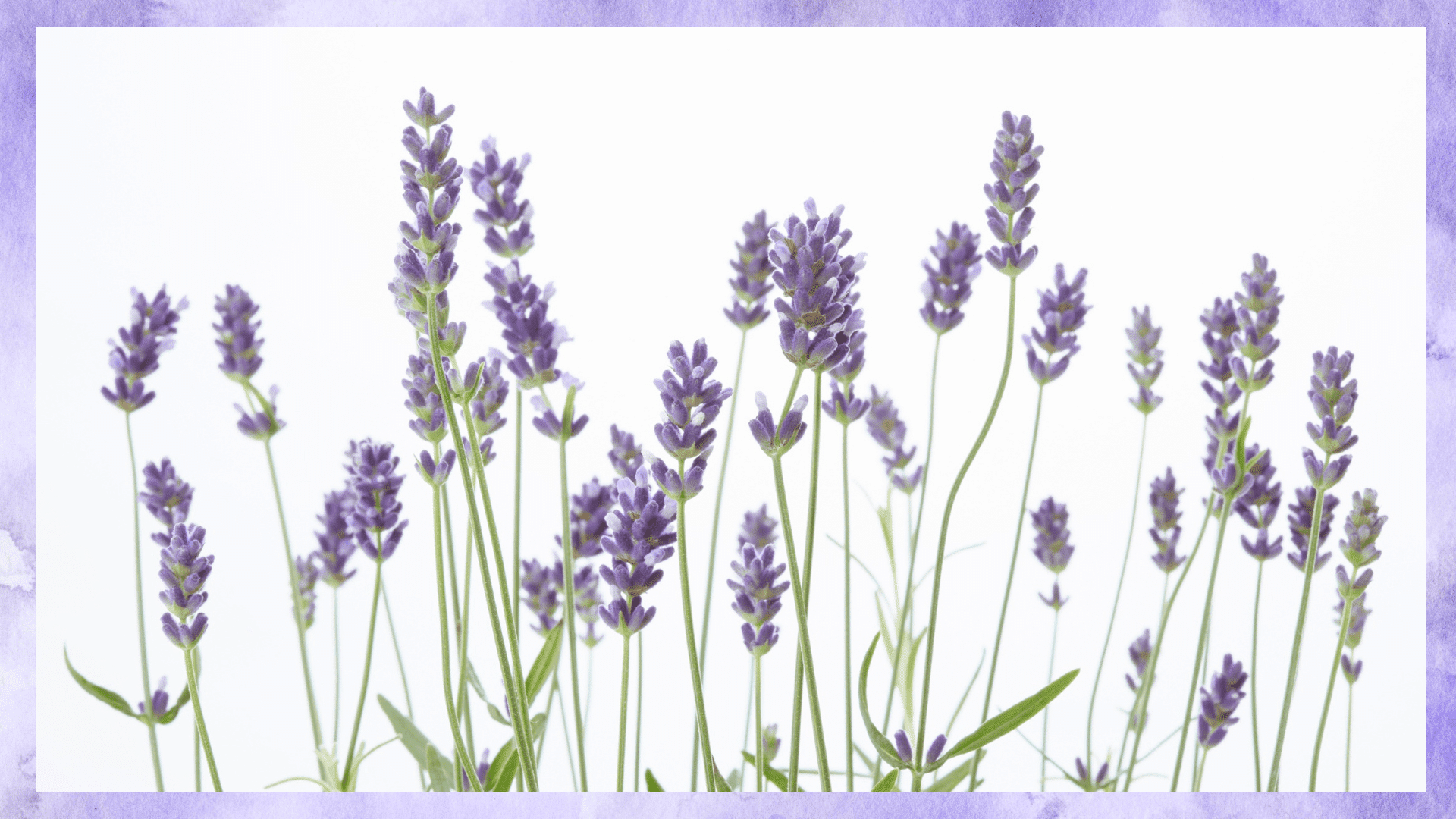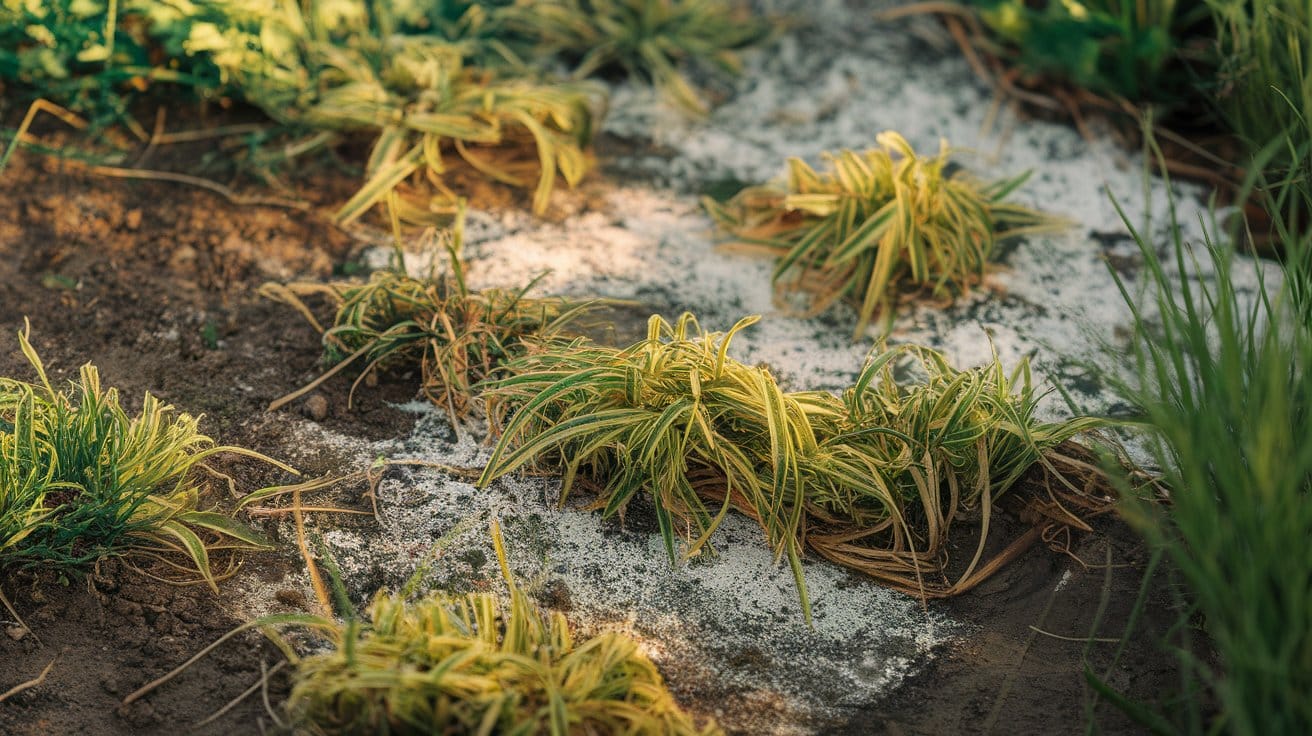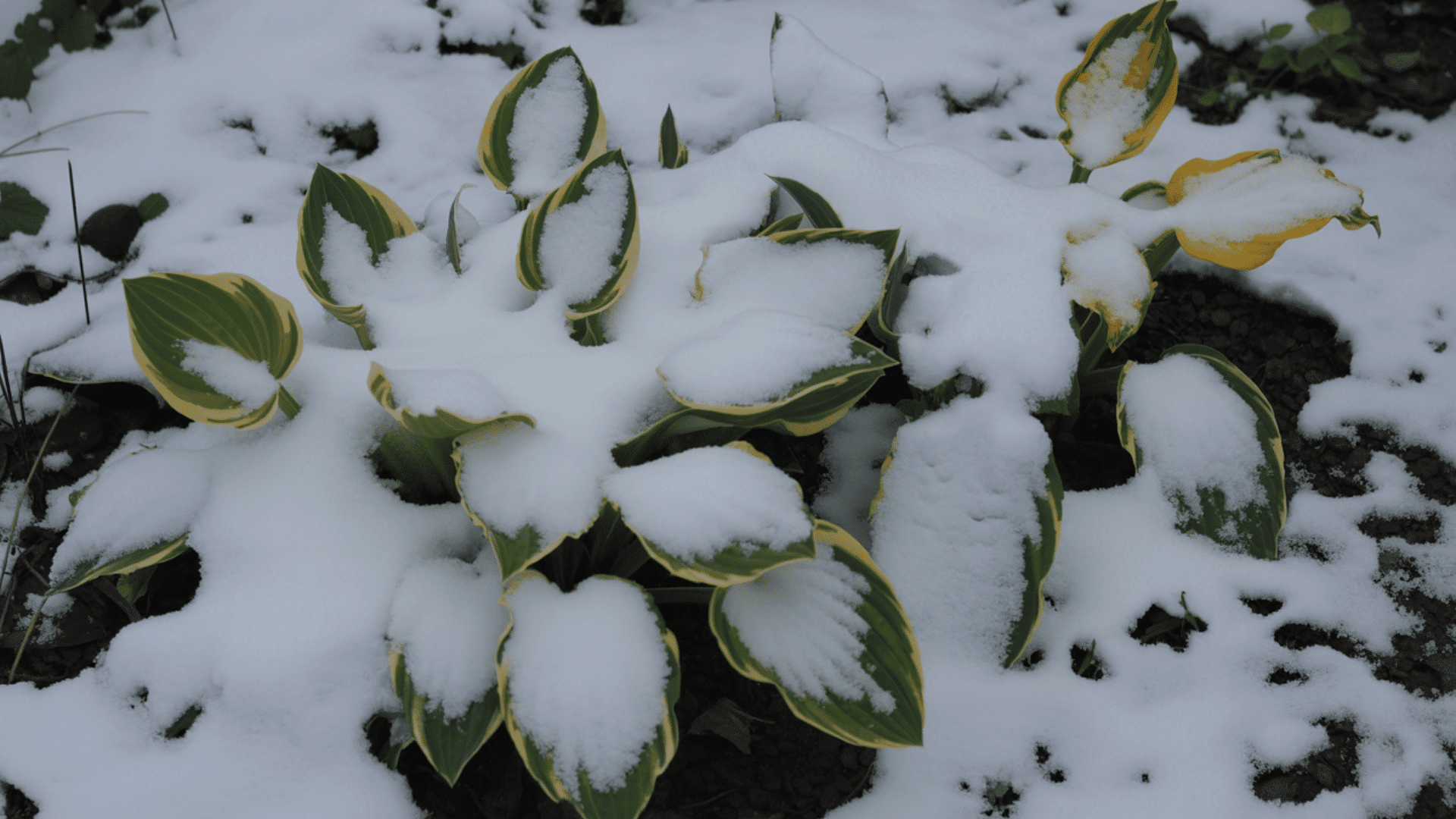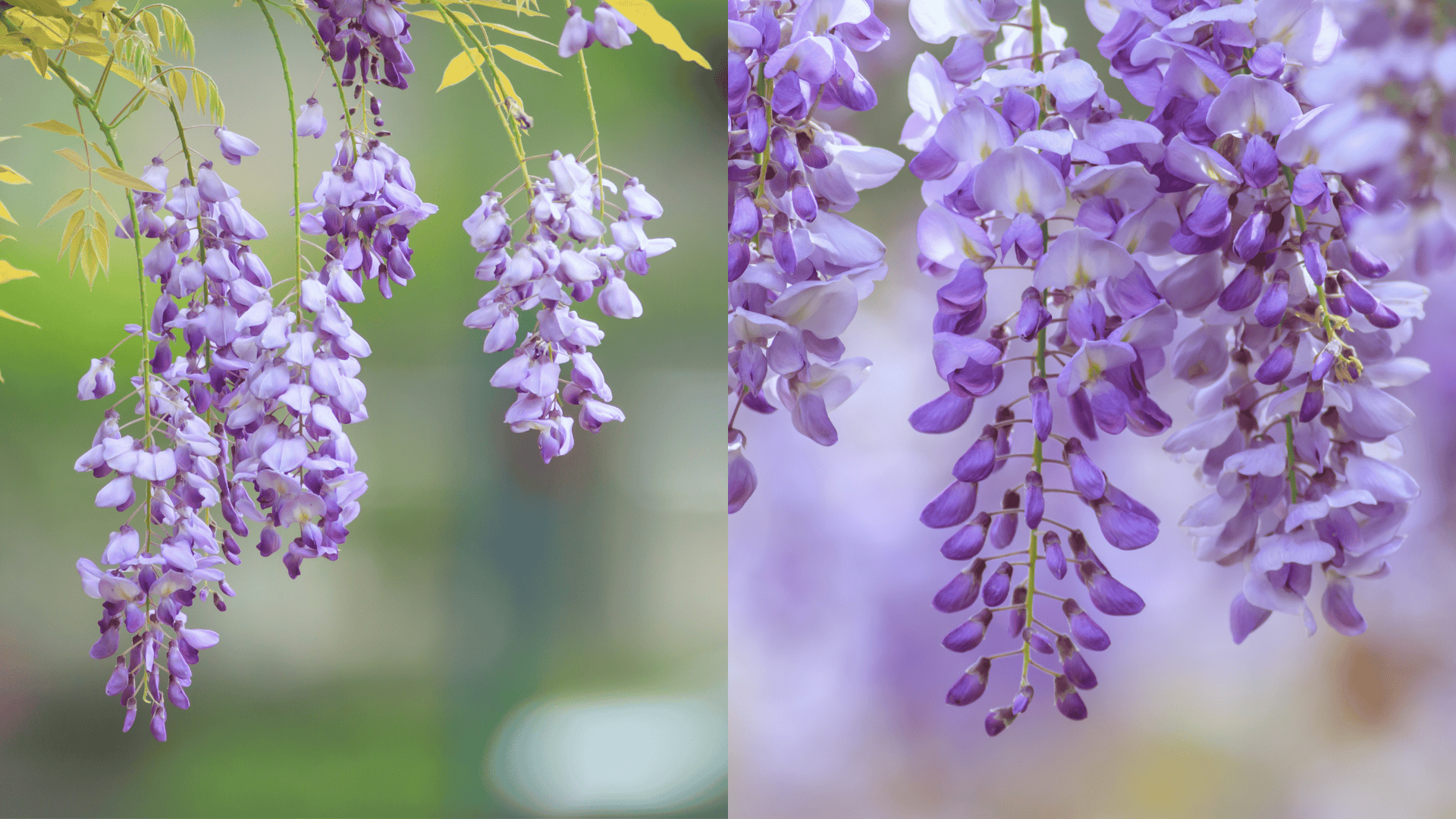Growing Brussels sprouts at home can be both rewarding and practical, especially for those who enjoy fresh, nutrient-rich vegetables straight from the garden.
These small, cabbage-like sprouts grow in cool weather and need patience to mature, but the results are worth the effort.
With proper soil preparation, steady watering, and a bit of care, you can enjoy a steady harvest through the cooler months.
This post explains everything you need to know about how to grow Brussels sprouts.
From choosing the right variety and planting at the right time to recognizing when to harvest for the best flavor
Let’s take a closer look at how to grow healthy, flavorful sprouts step by step using tried-and-tested gardening methods.
Harvesting Brussels Sprouts at the Right Time
Brussels sprouts have a long growing season, typically taking around 80 to 100 days to mature.
They grow best in cool temperatures, thriving when daytime highs stay between 60°F and 70°F.
Each tall stalk produces small sprouts along its length, forming gradually from the bottom upward.
Knowing this growth pattern helps gardeners plan planting times and care routines to ensure strong, even development throughout the season.
Brussels Sprouts Growing Stages
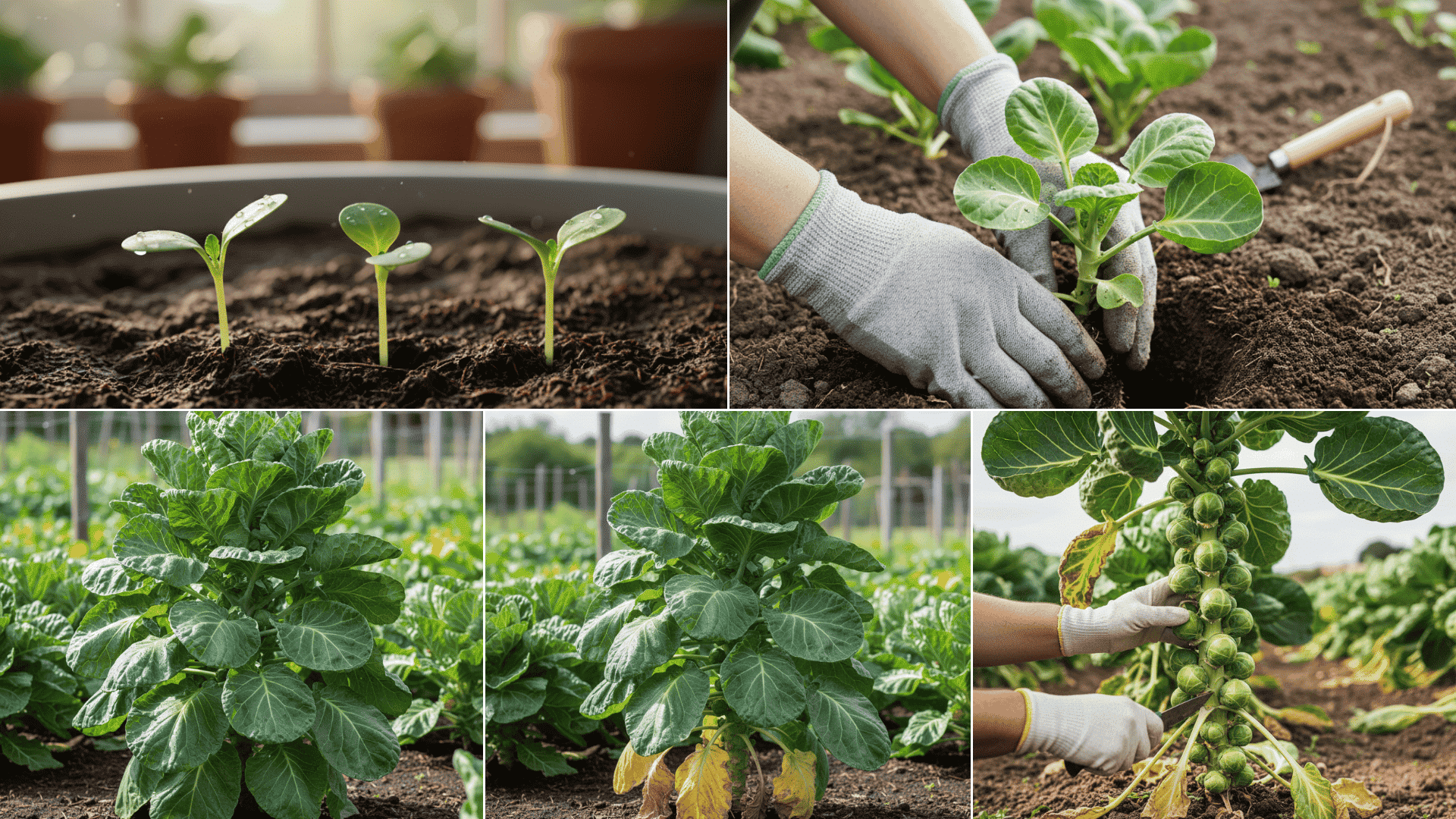
Brussels sprouts grow slowly and steadily, passing through several key stages before harvest.
Each phase requires a bit of attention but follows a clear pattern once established.
- Seedling Stage: Seeds germinate within 7–10 days in cool, moist soil, developing small but sturdy green leaves.
- Transplant Stage: After forming 4–6 true leaves, seedlings can be moved outdoors into nutrient-rich, loose soil.
- Vegetative Stage: The plant grows taller and develops broad leaves, preparing to support upcoming sprouts.
- Sprout Formation Stage: Tiny buds appear along the stalk and gradually grow into firm, compact sprouts.
- Harvest Stage: Sprouts become plump and tight, ready to be picked once they reach about an inch in diameter.
How to Grow Brussels Sprouts?
Growing Brussels sprouts successfully starts with the right foundation, choosing good varieties, planting at the proper time, and providing steady care.
Each step plays a vital role in achieving firm, flavorful sprouts.
Below are key points to follow for healthy growth from seed to harvest.
1. Selecting the Right Variety
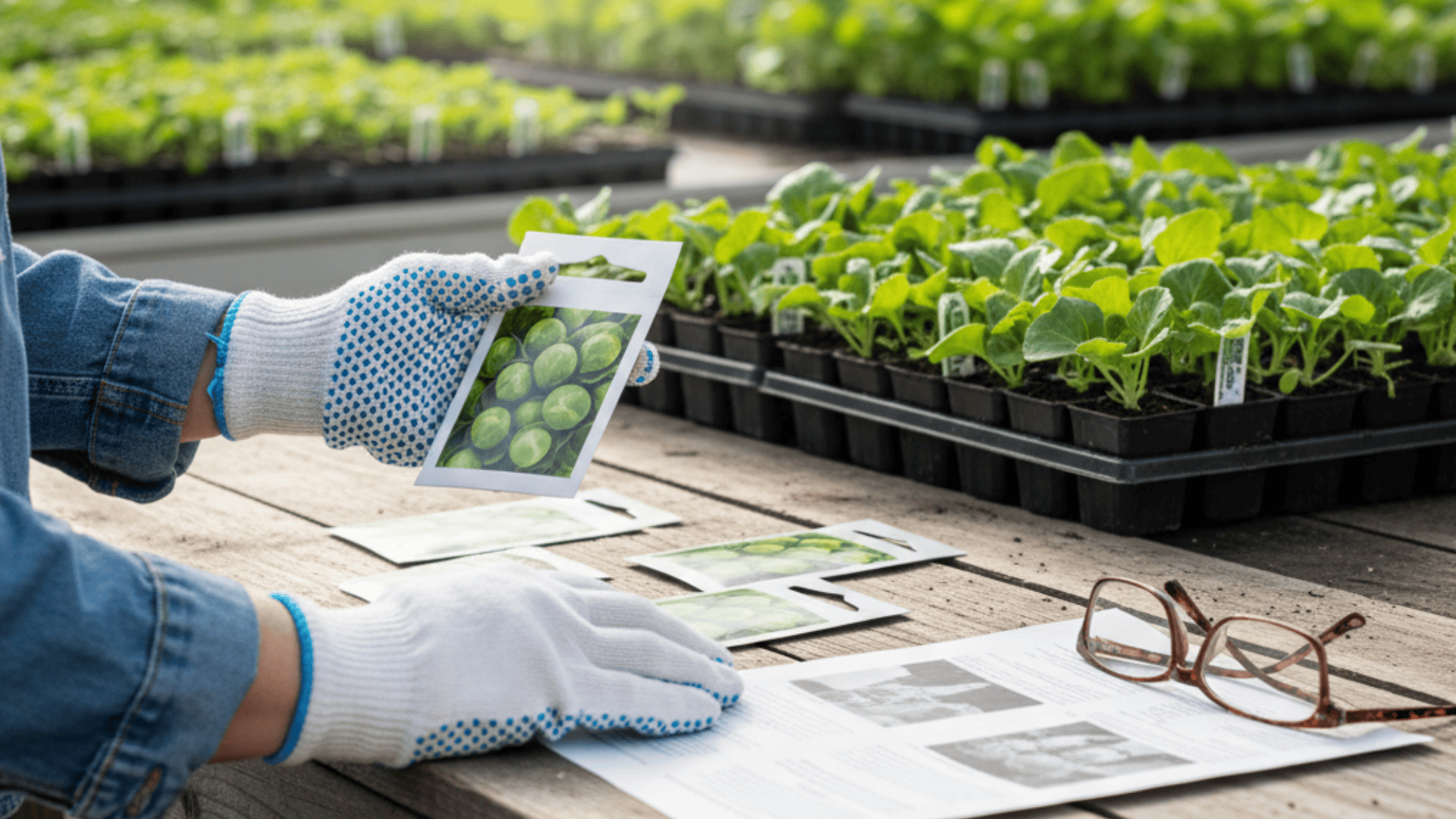
Choose a variety suited to your region’s climate and growing length.
Early-maturing types like ‘Churchill’ are great for short seasons, while ‘Jade Cross’ and ‘Long Island Improved’ work well in areas with longer cool periods.
Always select disease-resistant seeds for reliable results.
Reading seed packets or local nursery recommendations can help you identify the most dependable options for your area.
2. When and How to Plant?
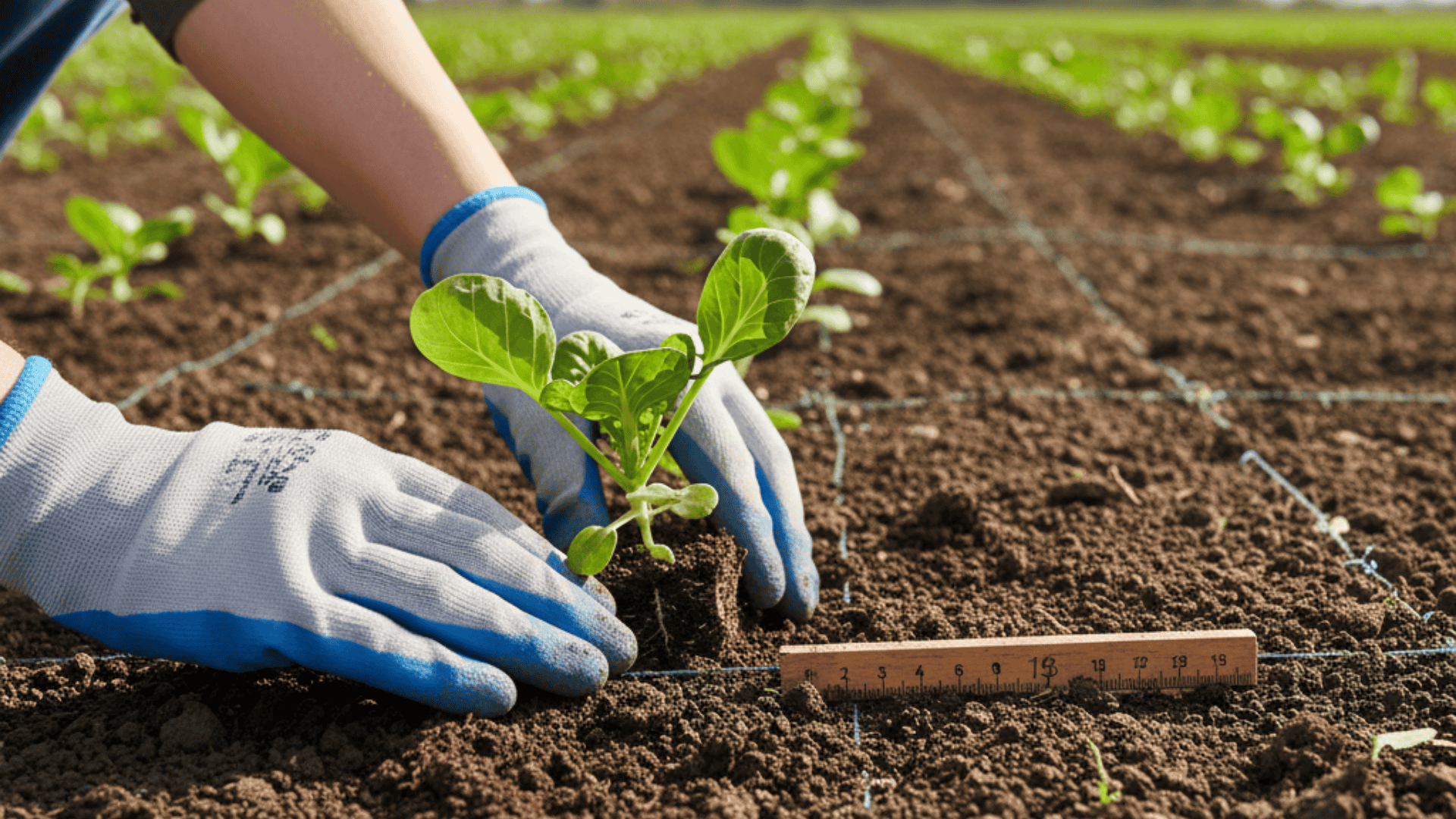
Start seeds indoors about 6–8 weeks before the last expected frost.
Transplant seedlings outdoors when the soil warms slightly but remains cool overall.
Space plants 18–24 inches apart to allow strong stalks and good air circulation, which reduces disease risk.
Gently firm the soil around the base after planting to help roots settle securely.
3. Soil and Fertilizer Preparation
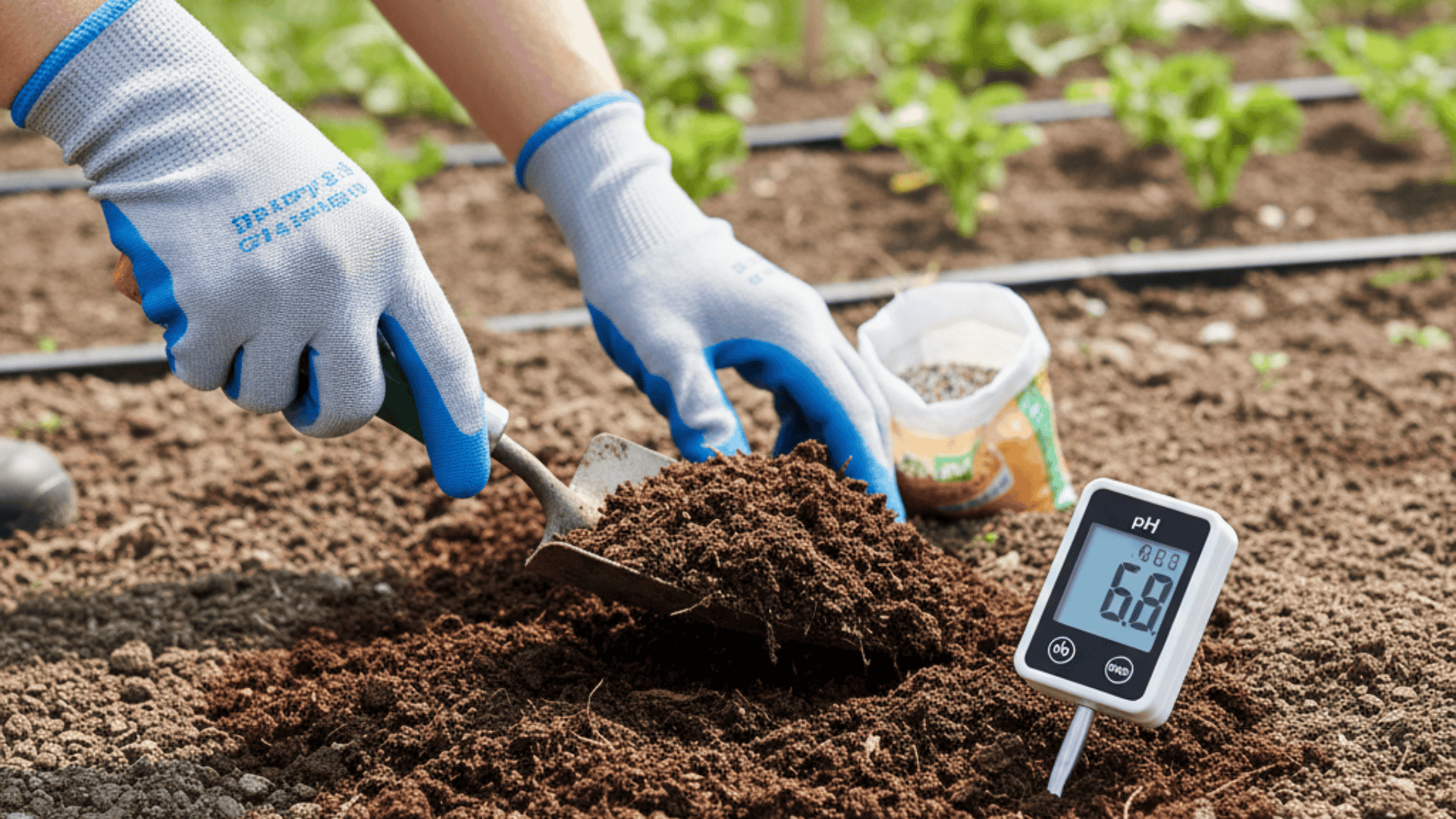
Use well-drained, fertile soil rich in compost or organic matter; A soil pH between 6.5 and 7.0 is ideal.
Before planting, mix in balanced fertilizer or composted manure to give young plants a strong start.
Midseason feeding helps promote firm, evenly sized sprouts.
Testing soil nutrient levels beforehand ensures proper balance and prevents over-fertilizing.
4. Watering and Light Needs
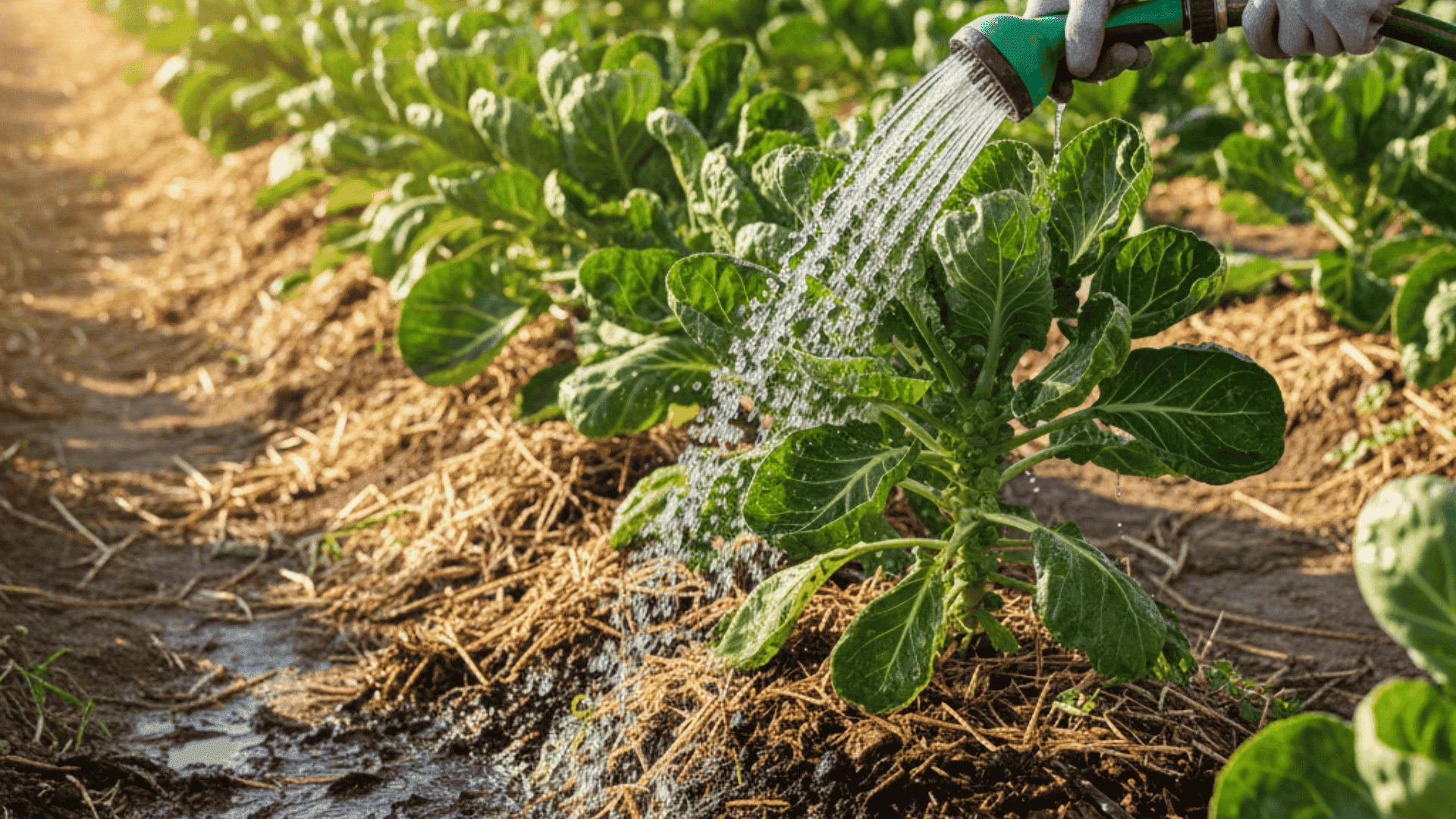
Brussels sprouts need steady moisture for even growth.
Water deeply once or twice a week, keeping the soil consistently moist but not waterlogged.
They prefer full sunlight, so plant them in a location that receives at least six hours of direct light each day.
Mulching around the base can help retain moisture and control weeds.
5. Pest and Disease Control
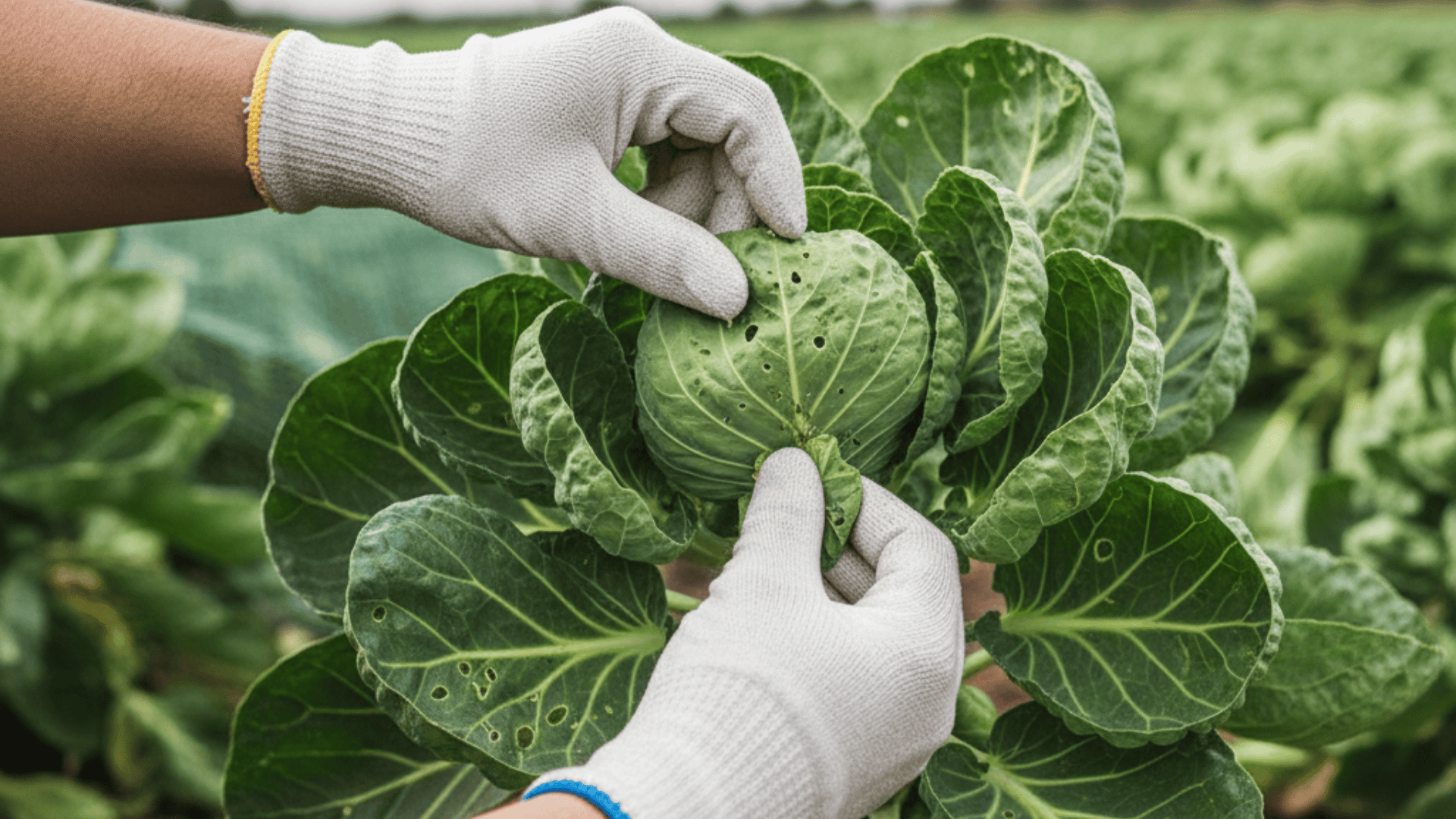
Watch for pests such as aphids, cabbage worms, and flea beetles.
Remove damaged leaves and use row covers or natural insect repellents as preventive measures.
Crop rotation and keeping the garden clean help prevent soil-borne diseases and keep plants healthy through the season.
Inspecting plants regularly allows early detection and quicker treatment of any problems.
How to Grow Brussels Sprouts in Pots?
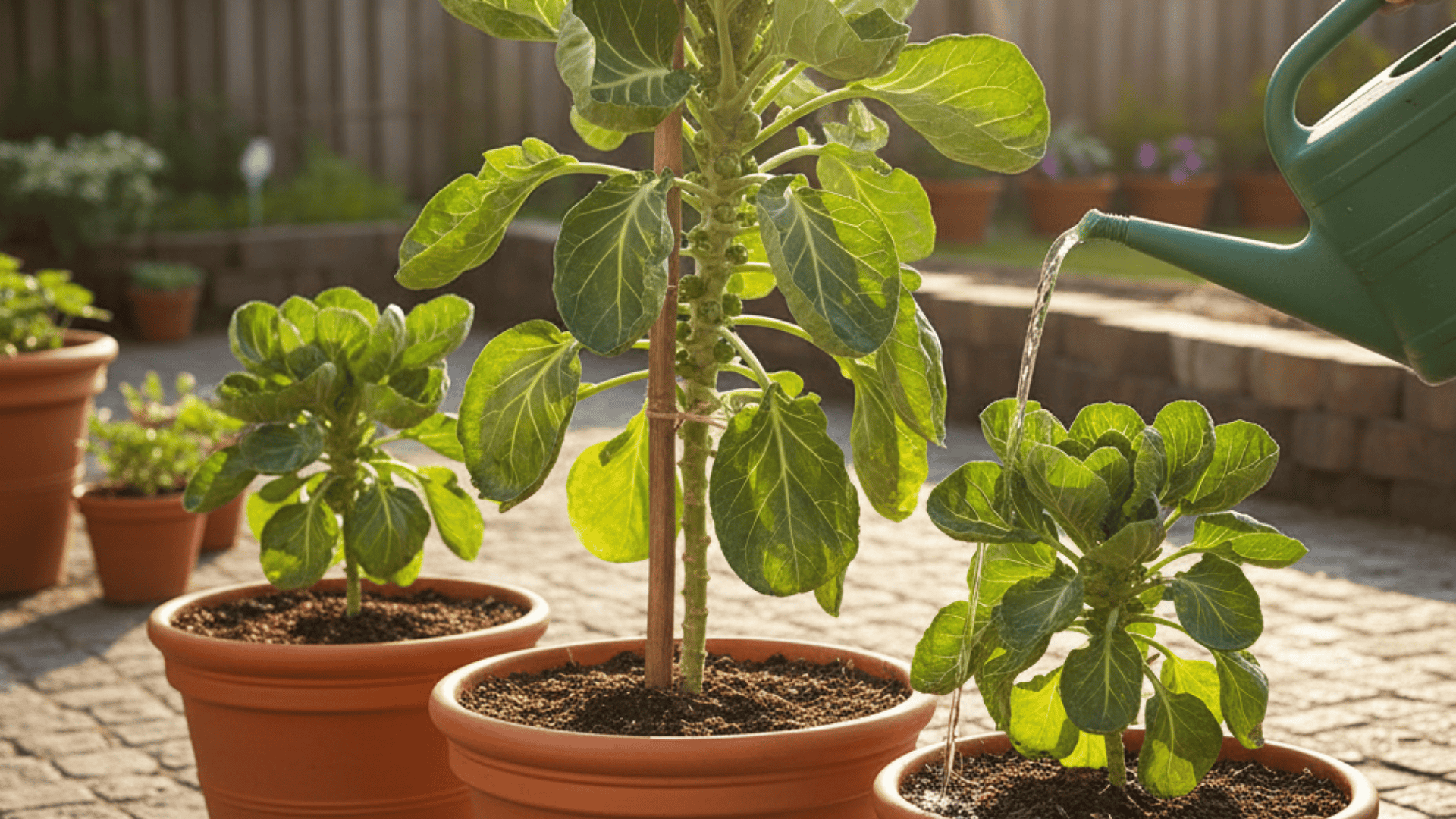
Growing Brussels sprouts in pots is a great option for gardeners with limited space.
With the right setup, container-grown plants can produce firm, healthy sprouts just like those grown in the ground.
- Use pots at least 12–14 inches deep with good drainage.
- Fill with nutrient-rich potting mix blended with compost.
- Place containers in full sun for at least six hours daily.
- Water consistently to keep the soil moist but not soggy.
- Support tall stalks with stakes as plants grow.
How to Care for Brussels Sprouts?
Proper care during the growing season helps ensure strong stalks and firm, flavorful sprouts. Consistent maintenance supports steady growth and reduces the risk of pests or disease.
This is how I keep my Brussels sprouts healthy from planting to harvest:
- Mulch the soil to retain moisture and regulate temperature.
- Water regularly to keep the soil evenly moist, especially during dry spells.
- Remove lower leaves once sprouts start forming to improve airflow.
- Stake tall plants to prevent them from bending or breaking in the wind.
- Apply compost midseason to replenish nutrients for continuous growth.
- Inspect weekly for insects or signs of disease and act early if spotted.
- Avoid crowding to give each plant enough space for light and air circulation.
When to Harvest Brussels Sprouts?
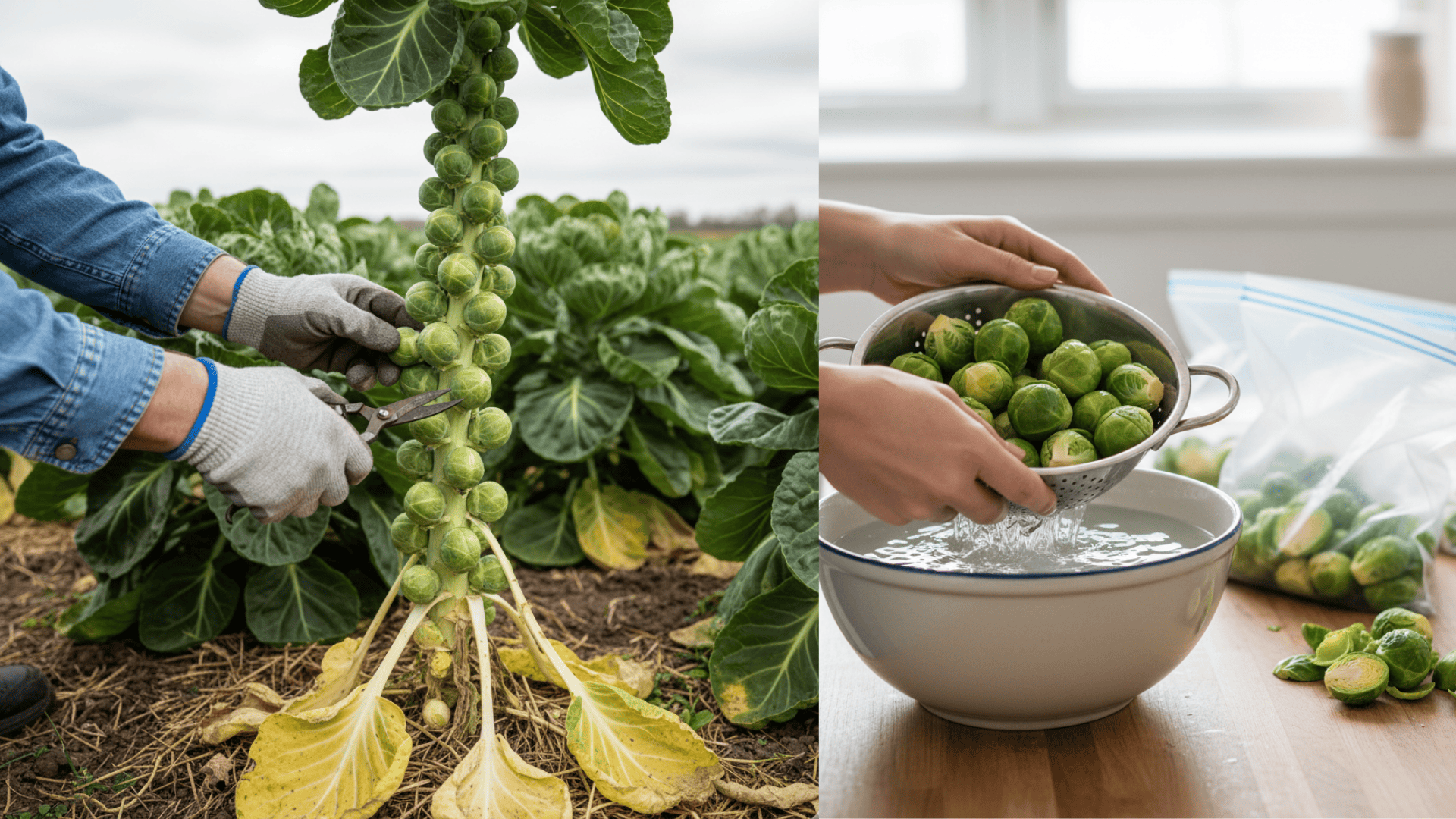
Timing the harvest is key to enjoying sweet, tender Brussels sprouts.
They mature from the bottom up, so start picking the firm, green sprouts once they reach about an inch in size for the best taste and texture.
1. Recognizing Harvest Readiness- Brussels sprouts are ready to pick when they’re about 1 to 1.5 inches in diameter, firm to the touch, and bright green.
Begin harvesting from the lower part of the stalk, as those sprouts mature first.
Cooler weather, especially light frost, can actually improve their flavor.
I usually twist each sprout gently off the stalk or use garden shears for a clean cut.
2. Storage and Preservation- Freshly picked sprouts can be kept in the refrigerator for up to two weeks.
To store longer, remove any yellow leaves and keep them unwashed in a breathable bag.
For freezing, blanch the sprouts for a few minutes, then cool and store them in airtight containers.
Proper storage helps maintain their texture and nutritional value for future meals.
Common Issues and How to Fix Them?
Even with good care, Brussels sprouts can face a few issues. Some quick solutions to common problems I’ve faced:
| Issue | Cause / Check | Solution |
|---|---|---|
| Yellow leaves | Nutrient deficiency | Add compost or fertilizer |
| Loose sprouts | Insufficient sunlight or warm temperatures | Ensure full sun and cool growing conditions |
| Insect damage | Pests on plants | Remove pests by hand or use organic sprays |
| Wilting plants | Poor drainage or overwatering | Improve drainage and water properly |
| Bolting in heat | High temperatures | Provide shade during hot spells |
| Fungal spots | Fungal infection, poor air circulation | Trim affected leaves and increase air circulation |
| Slow growth | Soil too acidic | Test soil pH and add lime if needed |
Simple Ways to Improve Your Harvest
Consistent care and smart techniques can lead to a productive Brussels sprouts harvest.
These expert-backed tips help maintain plant strength and ensure high-quality sprouts throughout the growing season:
- Rotate crops yearly to prevent soil-borne diseases and maintain soil health.
- Test the soil regularly to maintain balanced nutrients for steady plant growth.
- Use compost mulch to enrich the soil and retain needed soil moisture.
- Harvest lower sprouts first to allow upper ones to mature fully and evenly.
- Monitor temperature changes and protect plants from frost or heat stress.
- Keep the garden clean to reduce pest activity and disease spread effectively.
- Choose disease-resistant seeds for stronger plants and dependable yields.
Conclusion
Growing Brussels sprouts may take time, but the reward is a harvest full of crisp, flavorful sprouts ready for your table.
With the right soil, steady watering, and regular care, these cool-season vegetables can grow even in small home gardens.
Paying attention to spacing, pest control, and harvest timing makes a noticeable difference in quality and yield.
As the season ends, prepare the soil for your next planting to keep your garden productive year-round.
Start planning your Brussels sprouts crop today, gather your seeds, prepare your soil, and begin growing your own fresh supply.
Share your growing experience or questions in the comments below!
Frequently Asked Questions
Can you Eat Brussels Sprouts Leaves?
Yes, Brussels sprouts leaves are edible and can be cooked or eaten raw like cabbage or kale.
Can I Plant Brussels Sprouts in September?
Yes, in mild climates, you can plant them in September for a late fall or early winter harvest.
How Tall Do Brussels Sprouts Grow?
Brussels sprouts plants typically grow between 2 to 3 feet tall, depending on the variety and growing conditions.

